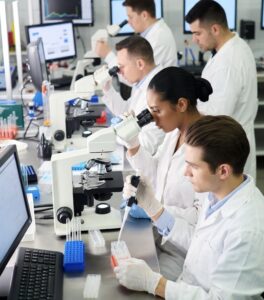Urinary Tract Infection
Etiology and Pathophysiology
- Urinary tract above urethra normally sterile
- Defense mechanisms exist to maintain sterility/prevent UTIs
- Complete emptying of bladder
- Ureterovesical junction competence
- Ureteral peristaltic activity
- Defense mechanisms
- Acidic pH (less than 6.0)
- High urea concentration
- Abundant glycoproteins
- Predisposing factors to UTI:
- Factors increasing urinary stasis
- Intrinsic obstruction (stone, tumor of urinary tract, urethral stricture, BPH)
- Extrinsic obstruction (tumor, ibrosis compressing urinary tract)
- Urinary retention (e.g., neurogenic bladder)
- Renal impairment
- Foreign bodies such as:
- Urinary tract calculi
- Catheters (indwelling, external condom catheter, ureteral stent, nephrostomy tube, intermittent catheterization)
- Urinary tract instrumentation (cystoscopy)
- Anatomic factors
- Congenital defects leading to obstruction or urinary stasis
- Fistula (abnormal opening) exposing urinary stream to skin, vagina, or fecal stream
- Shorter female urethra and colonization from normal vaginal flora
- Obesity
- Compromising immune response factors
- Aging
- Human immunodeficiency virus infection
- Diabetes mellitus
- Functional disorders
- Constipation
- Voiding dysfunction with detrusor sphincter dyssynergia
- Other factors
- Pregnancy
- Menopause
- Multiple sex partners (women)
- Use of spermicidal agents, contraceptive diaphragm (women), bubble baths, feminine sprays
- Poor personal hygiene
- Habitual delay of urination (“nurse’s bladder,” “teacher’s bladder”)
- Factors increasing urinary stasis
- Gram-negative bacilli normally found in GI tract: common cause
- Urologic instrumentation allows bacteria to enter urethra and bladder
- Organisms introduced via ascending route from urethra that originated from the perineum
- Contributing factor:
- Sexual intercourse promotes “milking” of bacteria from perineum and vagina
- May cause minor urethral trauma
- Sexual intercourse promotes “milking” of bacteria from perineum and vagina
- Less common routes
- Bloodstream
- Lymphatic system
- Catheter-associated urinary tract infections (CAUTI) are the most common HAI
- Causes
- Often: E. coli
- Less frequently: Pseudomonas species
- Most are underrecognized and undertreated
- Causes




